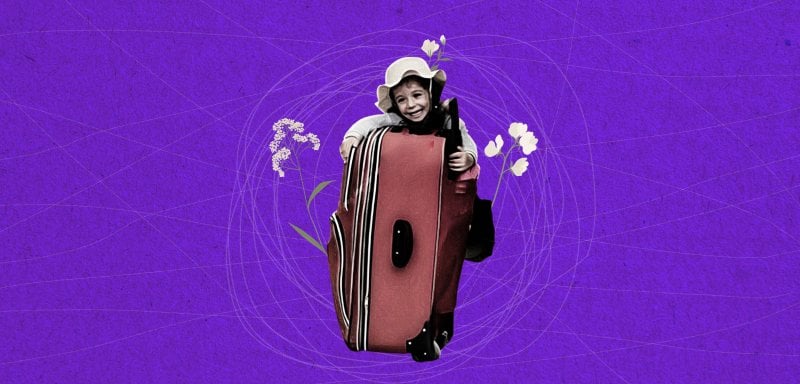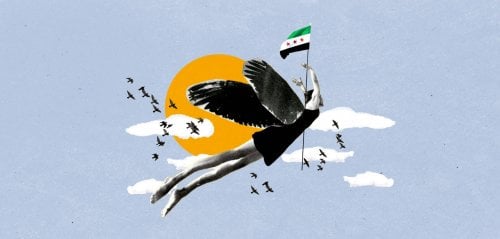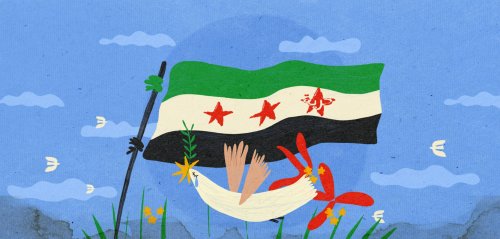For over a decade, Syria symbolized devastation.
The Syrian conflict, ignited during the Arab Spring of 2011, rapidly devolved into a multi-sided war involving regional and global powers. Over half of Syria’s population—more than 13 million people—was displaced, creating one of the worst humanitarian crises of the 21st century. Aleppo, Homs, and Raqqa bore the brunt of destruction, their inhabitants forced into refugee camps, neighboring countries, or perilous journeys to Europe. Even those who chose to move for a better life hoped—pessimistically—to one day return.
Syria’s landscapes today are marked by obliterated and abandoned cities. However, Bashar al-Assad’s departure and the rise of the Hay’at Tahrir al-Sham (HTS) have created cautious optimism as displaced Syrians begin to talk of reclamation. Although Syria’s political landscape remains fragmented, improved security in certain regions has enabled some families to consider returning. The U.N. is predicting one million refugees will cross borders back into Syria in the first half of 2025. The dynamics of this return are intertwined with political, social, and spiritual dimensions, particularly within the framework of Islam’s teachings on hijra—migration—a concept both historical and deeply relevant to modern displacement.
Hijra, in the context of Islam, refers to migration undertaken for survival or spiritual growth. The most pivotal hijra in Islamic history was the Prophet Muhammad’s migration from Mecca to Medina in 622 CE; his abscondment from persecution was not merely an escape, but an active transition toward establishing a just and inclusive society.
This is not an alien concept alien to the Syrian people—the vast majority of Syrians are Sunni Muslim, and the concept of hijra is both acknowledged and widely accepted. The Quran states that for “those who have forsaken their homes for the sake of Allah after enduring persecution, We shall certainly grant them a good abode in this world; and surely the reward of the Hereafter is much greater. If they could but know” (16:41). This verse highlights the divine promise of eventual settlement and justice for those forced into exile, especially so for the Syrians so blatantly wronged by Bashar al-Assad’s oppressive regime.
The value of diversity within an Islamic framework is far from incomprehensible to HTS; al-Jolani expressed in a statement that, “in the future Syria, we believe that diversity is our strength, not a weakness.” His words echo a verse included in the Quran which states that mankind was “created [...] into nations and tribes so that you may know one another” (49:13).
In northwest Syria, Ahmed al-Sharaa—better known as Abu Mohammad al-Jolani—leader of HTS, has sought to recast himself as a moderate force advocating for internal religious and ethnic plurality. This pivot represents a significant departure from the group’s origins as a splinter group of Al-Qaeda's Syrian branch, Jabhat al-Nusra. Al-Jolani’s rhetoric now emphasizes governance and reconstruction over conflict, aligning with Islamic principles of coexistence and justice.
But skepticism remains. Critics argue that Jolani’s shift may be strategic rather than ideological, aimed at gaining international legitimacy. The extent to which HTS can genuinely foster inclusion and security will determine its role in Syria’s broader recovery, and the safety in which Syrians can complete their own hijra.
The value of diversity within an Islamic framework is far from incomprehensible to HTS; al-Jolani expressed in a statement that, “in the future Syria, we believe that diversity is our strength, not a weakness.” His words echo a verse included in the Quran which states that mankind was “created [...] into nations and tribes so that you may know one another” (49:13).
For Syrians, the alignment with the notion of hijra is striking. Like the Prophet’s journey, their displacement has often been a matter of not just a better livelihood, but survival. Fleeing or returning home becomes not just a physical act but a spiritual one, embodying the hope of reestablishing a better society. Prophet Muhammad’s own hijra took three months, underscoring the importance of gradual reclamation, done with particular attention to planning, routes, and correspondence with trusted allies like Abu Bakr, the Prophet's closest companion, and Asma, Abu Bakr’s daughter—a process echoed in the staggered returns to Syria today.
Just as Medina was gradually transformed into a thriving, inclusive community, so too may Syria’s cities undergo a slow but deliberate restoration.
The journey back to Syria is laden with emotional, logistical, and economic obstacles. Families often find their homes reduced to rubble or seized by others during their absence. Emotional and psychological scars from years of war, compounded by uncertainty about security and political stability, weigh heavily on returnees. Economically, the return is further complicated by Syria’s crippled economy. Unemployment hovers around 50%, and essential commodities are scarce or prohibitively expensive. For many refugees, repatriation also involves giving up fragile livelihoods established abroad. These challenges underscore the need for sustained international support, not just in facilitating returns but in ensuring that returnees can thrive in their homeland. Rebuilding infrastructure and accessing basic services—water, electricity, healthcare—remain daunting tasks.
Islamic teachings on hijra can provide a profound framework for understanding and supporting Syria’s returnees as they navigate the sensitive new landscape. Hijra emphasizes the arduous physical process of migration, while addressing spiritual perseverance. Although people are choosing to return, many Syrians are being forcibly displaced while international parties survey the fall of the Assadists and al-Assad’s abrupt departure. Austria has recently announced plans to deport Syrian migrants, while Belgium, Germany, Greece, Italy, the Netherlands, and the U.K. said they will halt Syrian asylum applications.
Syria’s displaced, returnees, and refugees embody resilience in their journeys. Much like the Prophet Muhammad’s own migration, in Islam, reclamation is a continuous effort that requires global support. Just as Medina was gradually transformed into a thriving, inclusive community, so too may Syria’s cities undergo a slow but deliberate restoration.
*The views and opinions expressed in Opinion and Blog articles are those of the author’s, and do not necessarily reflect the official policy or position of Raseef22
Raseef22 is a not for profit entity. Our focus is on quality journalism. Every contribution to the NasRaseef membership goes directly towards journalism production. We stand independent, not accepting corporate sponsorships, sponsored content or political funding.
Support our mission to keep Raseef22 available to all readers by clicking here!
Interested in writing with us? Check our pitch process here!





